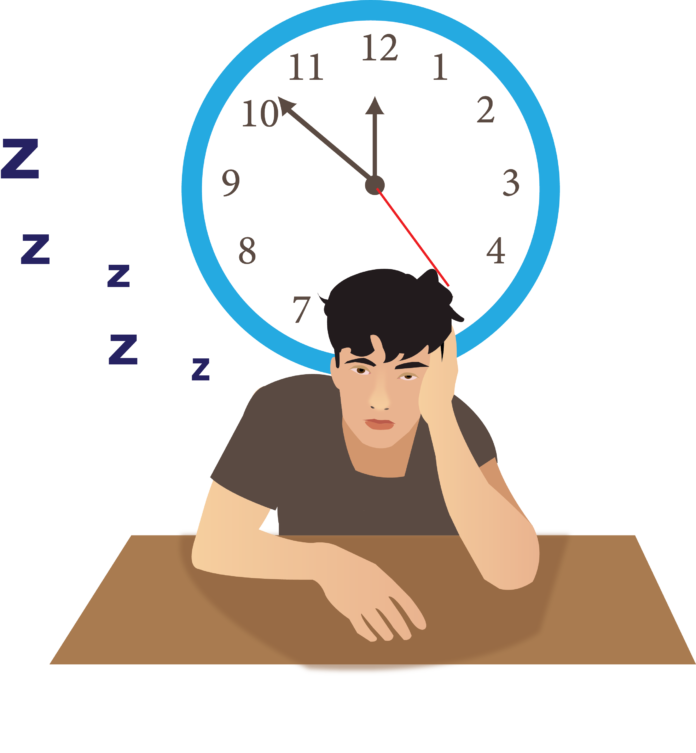The science behind alternative sleep cycles
BY ALEX MOTAWI — almotawi@ucdavis.edu
Welcome to college and the real world. As growing humans with growing responsibilities, the days suddenly get a lot shorter. Getting adequate sleep used to feel inevitable, and boy, is that different now. Now sleep is at a premium, making the required eight hours for functioning at full capacity feel like a dream. Instead of just choosing to live life in a constant state of sleep deprivation (like one-third of the world), is there a way to get eight hours worth of sleep in less than eight hours? Are the stories of famous sleepers from times past myths or realities? There is only one way to find out.
First, a crash course on sleep: Sleep is divided into five cycles. The first four are called NREM (non-REM cycles), while the last is called REM (rapid eye movement) sleep. The body fluctuates between these four stages throughout the night, following what is around a 90-minute cycle. Sleep experts place non-REM stages three and four and REM sleep as the most important of the stages. (You go through one and two in the process of falling asleep.)
Non-REM stages three and four are deep sleep and are responsible for muscle recovery and general growth. REM sleep (light sleep along with non-REM stages one and two) is accepted as when your brain commits activities to memory and refreshes itself; REM sleep is also the stage in which we experience dreams. In theory, REM sleep takes up 20 to 25% of the night, with the goal being to experience 90 to 120 minutes of REM sleep every evening. We spend little time in non-REM stages one and two while the remainder is deep sleep.
To simplify, our body wants two hours of REM sleep so the brain can handle responsibilities that come with being a brain, and then our body dedicates all the remaining possible sleep time to non-REM stages three and four in order to heal for the next day of activities. The foundation of these alternative sleep cycles is finding a way to achieve 90 to 120 minutes of REM sleep while minimizing the other stages. This is done by taking naps throughout the day in exchange for less sleep at night.
The most talked-about alternatives are called the Uberman and the Everyman. They are polyphasic cycles, meaning that they revolve around lots of napping. The Uberman requires six naps of 30 minutes each day, while the Everyman consists of a three-hour “sleep” and three 20-minute naps. In theory, these cycles train your body to jump into REM sleep almost instantly, allowing you to get adequate REM sleep through mostly napping. These are the cycles that random celebrities swear by, but they are extremely strict. Because of how little sleep they consist of, the naps have to be timed immaculately, and missing just one can ruin a whole day or two of wakefulness. These are the glorious dreams of “would-be” sleep hackers, but in reality, they don’t work for most humans. Current studies show they offer no benefit, so I would avoid these ones unless science changes its mind as we learn more over the next few years.
The other common alternative sleep cycle is a bi-phasic cycle called the Siesta sleep cycle. It consists of sleeping for five hours and then taking a 90-minute “siesta” in the afternoon and is theoretically just as effective as sleeping for 8 hours. This cycle is the norm in many countries like Italy and Spain. If you want to try a new sleep schedule, this is the one. It works. The 90-minute nap follows natural sleep cycles, allowing the body a quality break, and the five-hour sleep cycle gives enough time for recovery. Like the others, however, the cycle does require keeping consistent hours of sleep (really all sleep should be consistent) to be effective. If you can find time for a daily nap in the early afternoon, this is a good way to save time and still stay awake. However, finding a gap in the day to nap isn’t that easy; countries like Spain and Italy culturally acknowledge their “siesta” or “riposo,” making it easier there than it is here.
One more thing to consider — naps are incredible. Whatever sleep you currently get, tossing in a nap during the day could be beneficial. Naps under 15 minutes will be easy to wake from and will keep you more alert for one to three hours. Naps over 30 minutes require a bit of a wake-up period but often keep you more alert into the evening. Studies also say the more you nap, the easier it is to benefit from them — so have at it!
Overall, these alternative sleep cycles preach quality over quantity, but in reality, we need both. There is no magic life hack to beat the need for sleep, but if you want to experiment, trying the Siesta method for a few weeks may leave you with some extra time in the day. Happy napping!
Written by: Alex Motawi — almotawi@ucdavis.edu
Disclaimer: The views and opinions expressed by individual columnists belong to the columnists alone and do not necessarily indicate the views and opinions held by The California Aggie.




